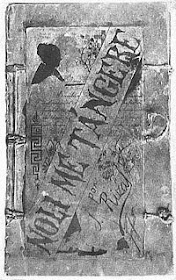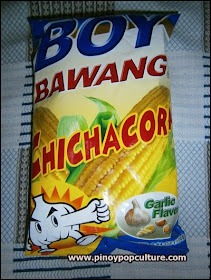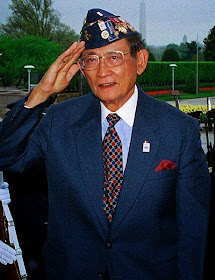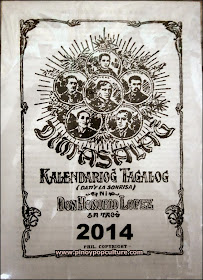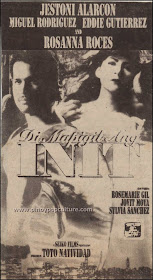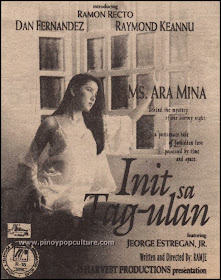March is the hot month which is traditionally considered as the harbinger of summer in the Philippines. Incidentally the third month of the year is also Fire Prevention Month, a reminder that each one of us should take the necessary precautions. Fire is something that is related to anything hot or to heat, which rhymes with the Tagalog word
init. Init means heat, and
mainit translates to hot (or intense). From 1993 to 1996, there were five action movies with titles that include the word
init.
Ramon "Bong Revilla Jr. and Vina Morales led the cast of Viva Films'
Sala sa Init, Sala Sa Lamig (
Lacking in Heat, Lacking in Coldness), which opened in theaters on July 22, 1993. The movie's title is derived from the Tagalog idiom that refers to a moody person. Other cast members include Johnny Delgado, Mark Gil, Ruby Rodriguez, Smokey Manaloto, Mia Pratts, Teresa Loyzaga. This action-comedy-romance feature was directed by Pepe Marcos.
The movie title
Walang Matigas na Tinapay sa Mainit na Kape (
There is No Hard Bread in Hot Coffee) seems to refer to Filipinos' penchant for drinking coffee any time of the day. A movie having such a title was topbilled by Fernando Poe Jr., Vandolph and Alice Dixson. It can be recalled that Poe was known as the "King of Philippine Movies," while Vandolph is the son of the late Comedy King Dolphy. Poe produced this action-comedy movie under his own FPJ Productions. Tony Cruz directed this movie, which opened in theaters on June 29, 1994.
'Di Mapigil ang Init (
Can't Stop the Heat)
is a Seiko Films presentation and has Rosanna Roces in the lead role, so it is readily known to what genre this movie belong ("If it's from Seiko, it must be good."). During that time, Roces was known as the queen of the "Titillating Film" or TF genre. Toto Natividad directed this sex drama movie, which opened in theaters on December 7, 1995 (A few weeks before the Metro Manila Film Festival). Supporting roles were portrayed by Jestoni Alarcon, Miguel Rodriguez and Eddie Gutierrez.
Intercinema Films'
Mainit sa Laban ... Renegade Soldiers (
Intense in Fighting ... Renegade Soldiers) opened in theaters on April 25, 1996. The ensemble cast of this action movie was led by Dan Fernandez, who is now a congressional representative from the province of Laguna. Other cast members include Roy Alvarez, Patrick Dela Rosa, Douglas Veron (who is also the director), Dindo Arroyo and Teresa Loyzaga.
The alluring Ara Mina is probably the right choice to lead the cast of Good Harvest Productions'
Init sa Tag-Ulan (Tagalog:
Heat in Rainy Season). This film by Ramje opened in theaters on October 23, 1996.
Init sa Tag-Ulan is dubbed as "a passionate tale of forbidden love possessed by time and space). Ara Mina's leading men in this movie are Dan Fernandez (again!), Raymond Keannu, Ramon Recto (in an introductory role) and Jeorge Estregan Jr. (who is now the provincial governor of ... Laguna)
POSTSCRIPT: It seems that the last two mentioned movies have common denominators: actors-turned-politicians and Laguna. Politics is a hot issue in the Philippines, rendering it a staple of heated debates among people from all walks of life.
Jeorge Estregan Jr. is the nephew of actor-turned-senator-turned-vice-president-turned-president-turned-mayor Joseph Estrada. In 1969, Estrada started the trend of action stars running for public office when he was elected as mayor of the town of San Juan. Joseph's sons, Jinggoy and J.V., are now senators.
Going back to Jeorge Estregan, his career has been marked by dynamic name changes: Jeorge, Jheorge, George, E.R. As a politician, he is now popularly known as E.R. Ejercito.
Bong Revilla, by the way, is another member of the club. He held both vice gubernatorial and gubernatorial posts in Cavite, then successfully ran for senator. His son Jolo is now the vice governor in their province.
The late Fernando Poe Jr. was the most popular actor in the country, and his legendary status endures. Poe, however, unsuccessfully ran for president in 2004. Claims persist that he was the rightful winner.
Dan Fernandez has an almost-namesake who is also an actor-turned politician: Vice Governor Daniel Fernando of Bulacan.
Enough of politics! Considering that heat is the theme for today, I cannot stop thinking about Laguna as a province famous for its hot springs.



